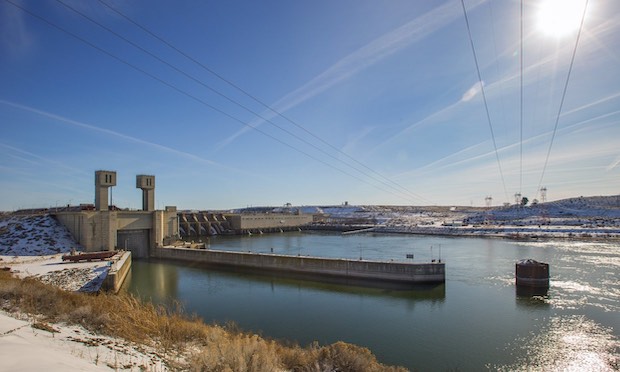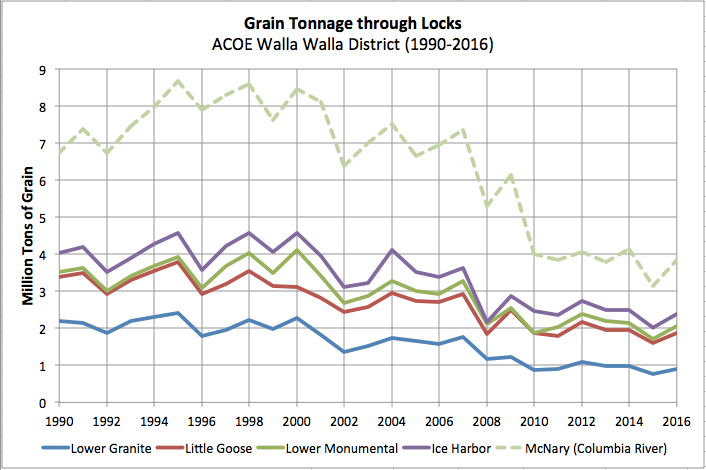forum
library
tutorial
contact

Sen. Ericksen Tells Seattle to Tear Down
Its Dams and to Imagine the Consequences
by Annette Cary
Bellingham Herald, August 8, 2019
|
the film forum library tutorial contact |

|
Sen. Ericksen Tells Seattle to Tear Down
by Annette Cary
|
"Even if the Boeing plant in Renton is flooded out,
I am sure the local economy could be reoriented to tourism."
 Sen. Doug Ericksen has proposed a study of breaching the Ballard Locks, removing Seattle City Light dams from the Skagit River and restoring Seattle's lakes -- Lake Union, Lake Washington and Green Lake -- to historic water levels.
Sen. Doug Ericksen has proposed a study of breaching the Ballard Locks, removing Seattle City Light dams from the Skagit River and restoring Seattle's lakes -- Lake Union, Lake Washington and Green Lake -- to historic water levels.
The proposal is in response to a recent Seattle-based study that valued the noneconomic -- or public goodwill -- benefits to taking out the four Lower Snake River hydropower dams in Eastern Washington at nearly $11 billion.
That dam removal study was done by ECONorthwest for Seattle-based Vulcan Inc., which oversees the business and philanthropic interest of the late Microsoft co-founder Paul Allen.
The study was a "slap in the face" to the Eastern Washington way of life, said U.S. Reps. Dan Newhouse and Cathy McMorris Rodgers, both R-Wash., in a joint statement when the study was released at the end of July.
The bill may be tongue-in-cheek and with no hope of ever passing, but it does make a point, said Todd Myers, environmental director for the Washington Policy Center. The conservative nonprofit research organization has opposed breaching the lower Snake River dams.
"It is useful to remind people of the consequences of their actions and the way to do that is to put it in their own backyards," he said.
SNAKE RIVER DAMS
The Snake River dams provide low-cost electricity for the Northwest.
Richland and Pasco are particularly dependent on electricity produced from the Ice Harbor Dam near Burbank to provide reliable power and prevent brownouts on the hottest days of the year, say Tri-City utility and business leaders.
 Most years nearly 10 percent of the nation's wheat exports are barged down the Snake River on their way to market. Some farmers, particularly near the Tri-Cities, also rely on the dams for water to irrigate their crops.
Most years nearly 10 percent of the nation's wheat exports are barged down the Snake River on their way to market. Some farmers, particularly near the Tri-Cities, also rely on the dams for water to irrigate their crops.
"Most of the support for breaching the Snake River dams seems to come from Seattle," Ericksen said. "But if its citizens understood the environmental damage caused by big water projects right in their hometown, I am sure they would want to lead by example."
There might be objections from owners of lakefront property "from those in Seattle who choose to use electricity," he said.
The study found that although electricity prices would increase and the dams would cost nearly $1.1 billion to remove, there could be an opportunity to increase recreational use of the river in Eastern Washington, bringing in about $1 billion in tourism spending.
The study said that there could be tourism opportunities, particularly in Clarkston, Wash., and Lewiston, Idaho, with a free-flowing river.
But the Port of Clarkston said the study ignored the economic benefit of the river cruise industry made possible by the dams.
Ericksen pointed out that the same argument -- that returning waterways to natural conditions would benefit tourism -- could also be applied to Seattle.
SEATTLE LAKE CHANGES
The sacrifices Seattle residents would make to restore their waterways "would be a small price to pay so that people who live hundreds of miles away could enjoy the environmental wonderland Seattle could become," he said.
"Even if the Boeing plant in Renton is flooded out, I am sure the local economy could be reoriented to tourism."
The man-made changes to the lower Snake River are dwarfed by the alterations to Seattle-area waterways, according to Ericksen.
A century ago, a navigable channel was dug to link Puget Sound to Lake Union and Lake Washington, and the lakes were partially drained to open thousands of acres of new land for development, he said.
Green Lake also was lowered, and what remained of once-scenic Ravenna Creek was routed through sewer pipes, he said.
Dams on the Skagit River turned it into a languid reservoir, he said.
Seattle-area interest in removing the dams has increased in recent years as the population of the Puget Sound's southern resident killer whales has declined. They rely on chinook salmon, some of which come from the Snake River, for much of their diet.
The ECONorthwest study acknowledged that many factors have contributed to the decline of endangered and threatened salmon and steelhead and that there is ongoing scientific debate about how much removing the dams would help fish populations.
Ericksen had one last thought for Western Washington residents eager to tear down Eastern Washington dams.
"We might also think about rebuilding Denny Hill and restoring those lovely tideflats south of downtown, but let's take this one step at a time," he said.
On a serious note, Myers pointed out that it would be irresponsible to remove Seattle waterway infrastructure, just as it would be to tear down the Eastern Washington dams.
As the fate of the lower Snake River dams is discussed at the state level, the decision of their future may be made based on a federal environmental study already underway.
In 2016, U.S. Judge Michael Simon in Portland overturned a 2014 management plan for the dams, finding it did too little to protect salmon runs.
He ordered the new environmental study and is requiring that it look at breaching or tearing down the Snake River dams as on option.
learn more on topics covered in the film
see the video
read the script
learn the songs
discussion forum
